The construction of the wonderful canon of logarithms
The construction of the wonderful canon of logarithms
The construction of the wonderful canon of logarithms
You also want an ePaper? Increase the reach of your titles
YUMPU automatically turns print PDFs into web optimized ePapers that Google loves.
Construction <strong>of</strong> <strong>the</strong> Canon. 23<br />
way, if you please, continue <strong>the</strong> <strong>logarithms</strong> <strong>the</strong>mselves<br />
in an exactly similar progression -with little<br />
and insensible error ; in which case <strong>the</strong> logarithm<br />
<strong>of</strong> radius will be o, <strong>the</strong> logarithm <strong>of</strong> <strong>the</strong> first sine<br />
after radius (by 31) will be 1.00000005, <strong>of</strong> <strong>the</strong><br />
second 2.00000010, <strong>of</strong> <strong>the</strong> third 3.00000015, and<br />
so <strong>of</strong> <strong>the</strong> rest.<br />
34. <strong>The</strong> difference <strong>of</strong> <strong>the</strong> <strong>logarithms</strong> <strong>of</strong> radius and a given<br />
sine is <strong>the</strong> logarithm <strong>of</strong> <strong>the</strong> given sine itself<br />
This is evident, for (by 27) <strong>the</strong> logarithm <strong>of</strong><br />
radius is nothing, and when nothing is subtracted<br />
from <strong>the</strong> logarithm <strong>of</strong> a given sine, <strong>the</strong> logarithm<br />
<strong>of</strong> <strong>the</strong> given sine necessarily remains entire.<br />
35- <strong>The</strong> difference <strong>of</strong> <strong>the</strong> <strong>logarithms</strong> <strong>of</strong> two sines must be<br />
added to <strong>the</strong> logarithm <strong>of</strong> <strong>the</strong> greater that you may have<br />
<strong>the</strong> logarithm, <strong>of</strong> <strong>the</strong> less, and subtracted from, <strong>the</strong> logarithm<br />
<strong>of</strong> <strong>the</strong> less that you may have <strong>the</strong> logarithm <strong>of</strong> <strong>the</strong><br />
greater.<br />
Necessarily this is so, since <strong>the</strong> <strong>logarithms</strong> increase<br />
as <strong>the</strong> sines decrease, and <strong>the</strong> less loga-,<br />
rithm is <strong>the</strong> logarithm <strong>of</strong> <strong>the</strong> greater sine, and <strong>the</strong><br />
greater logarithm <strong>of</strong> <strong>the</strong> less sine. And <strong>the</strong>refore<br />
it is right to add <strong>the</strong> difference to <strong>the</strong> less logarithni,<br />
that you may have <strong>the</strong> greater logarithm<br />
though, corresponding to <strong>the</strong> less sine, and on <strong>the</strong><br />
o<strong>the</strong>r hand to subtract <strong>the</strong> difference from , <strong>the</strong><br />
greater logarithm that you may have <strong>the</strong> less<br />
logarithm though corresponding to <strong>the</strong> greater<br />
sine.<br />
36. <strong>The</strong> <strong>logarithms</strong> <strong>of</strong>similarly proportioned sines are equidifferent.<br />
This necessarily follows from <strong>the</strong> definitions <strong>of</strong><br />
a logarithm and <strong>of</strong> <strong>the</strong> two motions. For since by<br />
C 4 <strong>the</strong>se



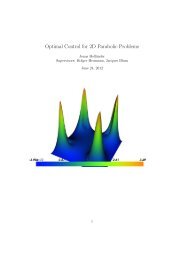
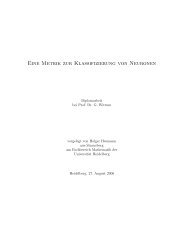
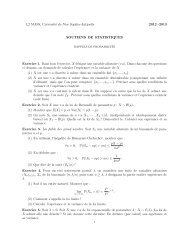
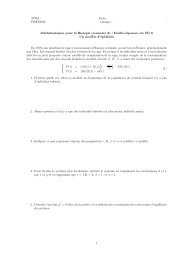


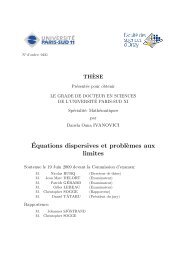
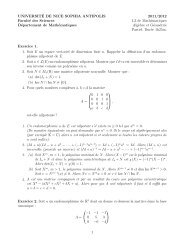
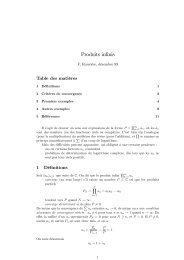
!['eries enti\`eres (+ [D78 Th d'Abel angulaire])](https://img.yumpu.com/14067031/1/184x260/eries-entieres-d78-th-dabel-angulaire.jpg?quality=85)

